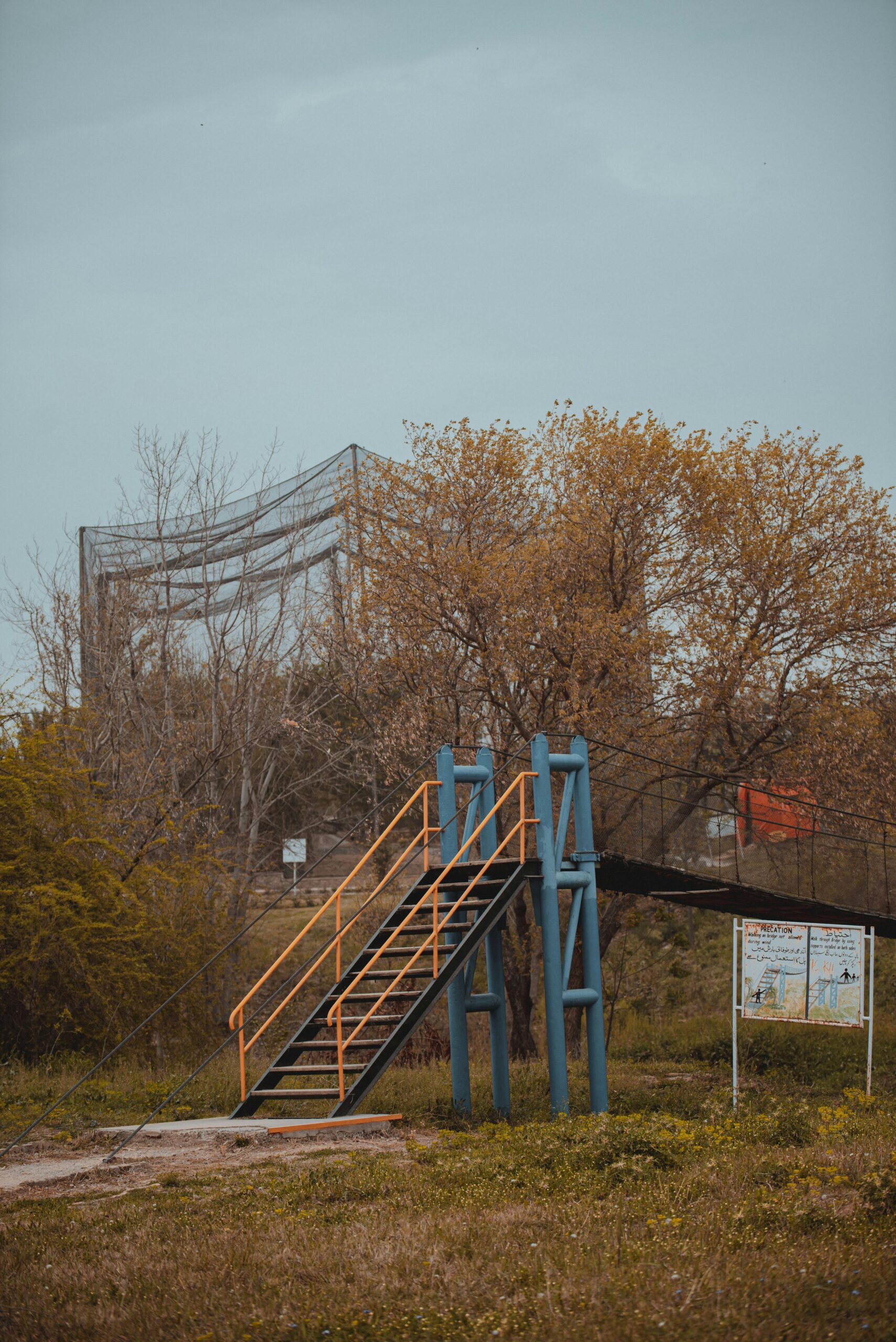Iron Price In Pakistan: Discover Why It’s Changing Rapidly Today is a hot topic that everyone in the construction and manufacturing industries just can’t stop talking about. Have you ever wondered why iron prices in Pakistan are fluctuating so wildly in 2024? Well, you’re not alone! The iron price in Pakistan has become one of the most unpredictable and rapidly changing commodities this year, affecting everything from small-scale projects to large infrastructure developments. If you’re planning to buy iron or stay updated on market trends, this article will unravel the mystery behind these swift price changes and what you should expect next.
The main idea here is to explore the key factors driving the rapid changes in iron prices in Pakistan today. From global supply chain disruptions to local economic policies, multiple elements are influencing this surge and dip in prices. Did you know that international trade tensions and raw material shortages have a direct impact on how much you pay per kilogram of iron in Pakistan? Moreover, the rising demand for iron in construction, fueled by urbanization and government projects, has added fuel to the fire. So, understanding these dynamics is crucial for contractors, investors, and even everyday consumers who want to make savvy buying decisions.
In addition to these, the latest trends in iron price fluctuations in Pakistan 2024 reveal how currency devaluation and inflation also play a massive role. Are you curious about how much iron cost today compared to last month or last year? Stay tuned as we dive deeper into the reasons behind these rapid changes, and uncover expert tips on how to navigate the volatile iron price market in Pakistan efficiently. Don’t miss out on this essential guide if you want to stay ahead in the game!
Top 5 Factors Driving the Rapid Change in Iron Price in Pakistan Today
The iron price in Pakistan has been changing rapidly today and many people wondering why this is happening so fast. Iron is one of the most important materials used in construction and manufacturing industries across Pakistan, specially in cities like Karachi where development is ongoing every day. Understanding the top factors driving this sudden change in iron price can help business owners, consumers, and investors make better decisions in the market. In this article, we will explore the main reasons causing the fluctuations in iron prices in Pakistan today.
1. Global Market Influence on Iron Price in Pakistan
First, iron prices in Pakistan do not exist in isolation. They are heavily affected by the global iron and steel market conditions. Pakistan imports a significant amount of raw materials and semi-finished iron products from countries like China, India, and the Middle East. When international iron ore prices increase due to high demand or supply shortages, Pakistan automatically faces higher import costs. This situation push iron prices upward locally.
For example,
- China, being the largest steel producer, had recently reduced its iron ore exports to manage its domestic supply.
- Global shipping costs have surged, adding more expenses for Pakistani importers.
- Political tensions in supplier countries sometimes delay shipments, leading to scarcity.
These global factors can cause sudden spikes or drops in iron price in Pakistan, creating uncertainty in the market.
2. Currency Fluctuations and Their Impact
Another key factor is the fluctuation of Pakistani Rupees against the US Dollar and other currencies. Since most iron imports are paid in dollars, any depreciation of the local currency makes imports costlier. This directly reflects in the final iron price in Pakistan.
For instance, if the rupee weakens by 5% against the dollar, Pakistani importers have to pay 5% more to buy the same amount of iron. This increase is passed on to wholesalers and eventually to consumers.
Some points about currency impact:
- Pakistan’s economy experiences frequent currency volatility.
- Inflation and foreign reserve depletion worsen exchange rates.
- Iron traders often hedge currency risks but it adds cost.
Because currency rates can change daily, iron prices also keep moving without much warning.
3. Domestic Demand and Supply Challenges
Inside Pakistan, the demand for iron has been rising rapidly due to ongoing infrastructure and housing projects. Cities like Karachi, Lahore, and Islamabad are witnessing construction booms, which increases iron consumption. When demand outstrips local supply, prices tend to rise.
On the supply side, Pakistan faces challenges such as:
- Limited local iron ore mining activities.
- Dependence on imported raw materials.
- Logistic hurdles in transporting iron from ports to inland areas.
If supply chains get disrupted, for example due to strikes or fuel shortages, iron availability decreases and prices jump sharply.
4. Government Policies and Taxes Affecting Iron Price in Pakistan
Government regulations also play an important role in determining iron price fluctuations. Taxes, tariffs, and import duties can increase the cost of iron products.
Recently, Pakistan imposed higher sales tax rates on steel and iron products to boost revenue. This change forced suppliers to increase prices to maintain profit margins. In addition, customs clearance delays and bureaucratic hurdles sometimes add indirect costs.
Some relevant government-related factors:
- Import duties on finished and semi-finished iron goods.
- Sales tax and withholding tax adjustments.
- Infrastructure development policies influencing demand.
These policy changes can cause sudden price increases or stabilization depending on the government’s approach.
5. Raw Material and Energy Cost Variations
Iron production and processing require significant amounts of raw materials and energy like coal, electricity, and fuel. Fluctuations in these input costs directly influence final iron prices.
For example,
- A rise in coal prices increases steel mill production costs.
- Electricity shortages in Pakistan lead to higher operational expenses for manufacturers.
- Fuel price increases raise transportation costs for iron delivery across the country.
All these factors combine to push iron prices up or down depending on the cost trends.
Summary of Top 5 Factors Driving Iron Price Changes in Pakistan
| Factor | Description | Impact on Iron Price |
|---|---|---|
| Global Market Influence | Changes in international iron ore prices and shipping costs | Increase or decrease depending on global trends |
| Currency Fluctuations | Variations in Pakistani Rupee exchange rates | Usually causes price hikes when rupee weakens |
| Domestic Demand and Supply | Growing construction demand and supply chain issues | Causes price increases during shortages |
| Government Policies and Taxes | Taxes, duties, regulation changes | Can lead to sudden price adjustments |
| Raw Material & Energy Costs | Changes in coal, electricity, and fuel prices | Adds to production cost, influencing final prices |
To put it simply, the rapid change in iron price in Pakistan today is a complex result of many intertwined factors. From global market swings to local economic conditions, each element plays its own part. Business owners in Karachi and other cities should
How Global Market Trends Are Impacting Iron Price Fluctuations in Pakistan
Iron price in Pakistan is changing rapidly today, leaving many people wondering why its fluctuations seem so unpredictable. The global market trends have a huge impact on these price shifts, and understanding this connection is crucial for consumers, businesses, and policymakers in Pakistan. Over the last few years, the iron industry has seen many ups and downs, influenced by international demand, supply chain interruptions, and geopolitical tensions. This article explores how those global market trends are affecting iron prices locally and why these changes are happening so fast.
The Basics of Iron Price Fluctuations in Pakistan
Iron is a fundamental commodity used in construction, manufacturing, and infrastructure development in Pakistan. The price of iron in Pakistan is not only decided by local factors such as production cost and demand but also by international market forces. Pakistan imports a significant amount of raw iron and steel products from countries like China, India, and South Korea. Hence, any change in global iron prices directly affects the local market.
Some key points about iron price fluctuations:
- Iron prices depend on global supply and demand balance.
- Currency exchange rates also influence import costs.
- Political instability in supplier countries can disrupt supply chains.
- Transportation and logistics delays cause price hikes.
- Domestic policies and tariffs add extra layers of complexity.
How Global Demand Influences Iron Prices in Pakistan
The iron market worldwide is highly sensitive to construction booms and industrial growth in major economies like China, the United States, and the European Union. When those countries increase their iron consumption, global prices tend to rise. Pakistan, being a developing country with ongoing infrastructure mega-projects, usually follows this trend closely.
For example,
- When China ramps up steel production for its urban development, iron prices globally surge.
- If the U.S. imposes tariffs on steel products, export patterns change, affecting prices in importing countries.
- Europe’s green energy transition causes shifts in metal demand, indirectly influencing iron prices.
Pakistan’s local industries often face price increases during such global demand spikes due to higher import costs. This usually translates into higher construction and manufacturing expenses domestically.
Supply Chain Disruptions and Their Effects
In recent years, supply chain interruptions have become a major cause of iron price volatility. The COVID-19 pandemic disrupted mining, production, and shipping worldwide, creating shortages and delays. Even today, issues remain in shipping routes, container availability, and port congestions.
Important supply chain factors affecting iron price in Pakistan:
- Limited shipping containers increase transportation costs.
- Delays at ports cause inventory shortages.
- Restrictions in exporting countries limit raw material availability.
- Rising fuel prices increase logistic expenses.
- Labor shortages in mining and manufacturing slow down production.
These disruptions cause importers in Pakistan to pay more to secure iron supplies quickly, pushing prices upward. Sometimes, local suppliers increase prices preemptively due to uncertainty, further contributing to rapid changes in iron price.
Currency Fluctuations and Inflation
The Pakistani Rupee’s value against the U.S. Dollar and other currencies plays an important role in determining import costs. Since Pakistan imports most of its iron, a weak Rupee means higher prices in local currency terms. Inflation and interest rate changes also indirectly impact iron prices by affecting overall production costs and consumer purchasing power.
Currency and inflation impacts:
- Rupee depreciation increases import costs.
- Inflation raises labor and material costs.
- Central bank policies influence investment in infrastructure.
- Price volatility in global markets causes uncertainty in currency markets.
For instance, a sudden drop in Rupee value against the Dollar can cause iron prices in Pakistan to spike overnight, making it difficult for businesses to plan budgets or consumers to afford construction materials.
Historical Context of Iron Prices in Pakistan
Looking back, iron prices in Pakistan have seen several significant fluctuations tied to global events. In the early 2000s, rising industrialization pushed demand higher, causing steady price increases. During the 2008 global financial crisis, prices dipped sharply as construction slowed worldwide.
More recently,
- The 2020 pandemic caused supply shortages and price spikes.
- Tariff changes and trade agreements between Pakistan and other countries influenced import costs.
- Infrastructure projects like the China-Pakistan Economic Corridor (CPEC) increased local demand, supporting higher prices.
This historical perspective shows how global market trends and local projects combine to influence iron prices dynamically over time.
Comparison of Iron Prices: Pakistan vs. Regional Countries
To understand Pakistan’s iron price fluctuations better, comparing with neighboring countries provides insight.
| Country | Average Iron Price (per ton) | Main Influencing Factors |
|---|---|---|
| Pakistan | PKR 130,000 – 160,000 | Import dependency, currency rate, CPEC demand |
| India | INR 50,000 – 60,000 | Domestic production, government policies |
| Bangladesh | BDT 55,000 – 65,000 | Import reliance, infrastructure growth |
| China | CNY 3,500 – 4 |
Why Is Iron Price in Pakistan Surging? Key Insights You Need to Know
Why Is Iron Price in Pakistan Surging? Key Insights You Need to Know
Iron price in Pakistan is going through a significant change recently, with a rapid surge that many people and businesses are finding hard to cope with. The construction industry, manufacturing sectors, and even everyday consumers are feeling the pinch as iron prices continue to climb. But what exactly is causing this sudden rise? And why iron price in Pakistan is changing so fast today? This article tries to explore the key reasons behind this trend, offering insights that anyone interested in the market should know.
Historical Context of Iron Prices in Pakistan
To understand why iron price in Pakistan surging now, it helps to look at the past trends. Historically, iron prices in Pakistan have been influenced by local demand, global metal markets, and the cost of raw materials. For many years, prices were relatively stable with seasonal fluctuations. However, starting from late 2020 and early 2021, prices started to rise sharply, linked to global economic recovery after the COVID-19 pandemic.
Some factors that influenced past iron prices includes:
- Local demand from construction and infrastructure projects
- Import duties and taxes applied by the government
- Fluctuations in the international iron ore and steel markets
- Production costs of local steel mills
What Is Driving the Current Surge in Iron Price?
Several reasons have contributed to the recent rapid increase in iron price in Pakistan. The situation is complex, with both local and international elements playing their role. Here are the main drivers:
-
Rising Global Iron Ore Prices
The global price of iron ore, which is the primary raw material for steel production, has been increasing steadily. China, being the largest consumer of iron ore, impacted the prices by reducing imports temporarily due to environmental controls. This created supply shortages, pushing prices higher worldwide. -
Increased Demand in Pakistan’s Construction Sector
Pakistan’s construction industry has been booming, with many new projects starting across cities like Karachi, Lahore, and Islamabad. This increased demand for iron bars and steel products is pushing prices upward. -
Currency Devaluation
The Pakistani Rupee has weakened against the US Dollar, making imported raw materials and finished goods more expensive. Since a significant portion of iron and steel products in Pakistan are either imported or dependent on imported raw materials, this currency devaluation directly affects prices. -
Supply Chain Disruptions
Due to global supply chain issues, including shipping delays and increased freight costs, iron and steel materials are reaching Pakistan at a slower pace and higher costs. -
Government Policies and Taxes
Changes in import duties, taxes, and regulatory policies can also impact iron prices. Recently, some adjustments in taxes on the steel sector has made importing materials costlier.
Comparing Iron Prices: Pakistan vs. Neighboring Countries
To understand how Pakistan’s iron price stands in regional context, here is a simple comparison:
| Country | Approximate Iron Price (per ton) | Factors Affecting Price |
|---|---|---|
| Pakistan | PKR 130,000 to 150,000 | Currency devaluation, demand surge, import duties |
| India | INR 55,000 to 60,000 (PKR 135,000) | Local production, import reliance, government subsidies |
| Bangladesh | BDT 55,000 to 60,000 (PKR 120,000) | Growing infrastructure, import costs, local demand |
| China | CNY 4,500 to 5,000 (PKR 140,000) | Largest producer, export restrictions, environmental policies |
This shows that Pakistan’s iron prices are somewhat aligned with regional trends, but currency weakness and taxes push prices higher locally.
Practical Examples: How Iron Price Surge Affects Everyday Life
-
Construction Costs Increase
Builders and contractors face higher expenses for steel reinforcement bars. This can delay projects or increase the cost of housing and commercial buildings. -
Manufacturing Sector Impact
Factories producing appliances, vehicles, and machinery depend on steel. Rising iron prices increase production costs, sometimes passed to consumers. -
Consumer Goods Price Rise
Items using steel components, like furniture or tools, become more expensive as manufacturers face higher raw material costs.
What Can Businesses and Consumers Do?
Given the volatile iron price in Pakistan, both businesses and consumers should consider some strategies:
-
Bulk Buying or Early Procurement
Buying steel materials in advance or in bulk can help avoid future price hikes. -
Exploring Alternatives
Using alternative construction materials where possible, like fiber-reinforced polymers or aluminum, although they may not fully replace steel. -
Monitoring Market Trends
Staying updated with global iron ore prices and local government policies helps in planning purchases better. -
Negotiation with Suppliers
Trying to lock in prices with suppliers through contracts
Affordable Iron Price Options in Pakistan: Where to Buy Quality Iron in 2024
Affordable Iron Price Options in Pakistan: Where to Buy Quality Iron in 2024
In Pakistan, iron is one of the most essential construction materials, and its demand keeps rising every year. Especially in 2024, many people wondering about affordable iron price options in Pakistan and where they can get quality iron without breaking their budgets. The iron price in Pakistan has been changing rapidly these days, causing confusion among buyers and sellers alike. This article will explore the reasons behind these price changes, where to find affordable and reliable iron, and how the market trends might affect construction projects in Karachi and beyond.
Why Iron Price in Pakistan is Changing Rapidly Today
The iron price in Pakistan has always been a bit unstable, but 2024 shows more fluctuations than before. Several factors contribute to these sudden changes:
- Global Steel Market Trends: Pakistan imports a significant amount of iron and steel. When global steel prices rise, local iron prices also go up.
- Currency Fluctuations: The Pakistani Rupee has faced ups and downs against the US Dollar, affecting import costs.
- Local Demand and Supply: Urban development projects in Karachi and other cities increase demand, sometimes outpacing supply.
- Government Policies: Taxes, tariffs, and import regulations change frequently, directly impacting iron prices.
- Raw Material Costs: The cost of scrap metal and iron ore, essential for iron production, can vary widely.
Historically, iron prices in Pakistan have seen spikes during major construction booms, such as the post-2010 housing surge. Since then, price volatility became more common due to global economic uncertainties.
Affordable Iron Price Options in Pakistan: Where to Buy?
Finding affordable iron in Pakistan can be challenging, but there are several places and strategies where buyers can get better deals.
-
Local Iron Markets in Karachi
Karachi has some of the biggest iron markets in the country. Places like Jodia Bazaar and Saddar are known for iron trading. Buyers often get competitive prices here because of the high volume of sellers. -
Direct Purchase From Manufacturers
Several local manufacturers produce iron bars and rods. Buying directly from them usually cuts down middlemen costs. Some well-known manufacturers include:- Ittefaq Iron Industries
- Amreli Steels Limited
- Mughal Iron & Steel Industries
-
Wholesale Dealers and Distributors
For bulk buyers, wholesale dealers offer significant discounts. These dealers often have contracts with manufacturers and can provide competitive rates. -
Online Platforms and Marketplaces
Recently, online platforms emerged where buyers can compare prices and order iron. Websites like OLX Pakistan and Daraz.pk sometimes list iron suppliers with reviews and ratings.
Comparing Iron Prices: Karachi vs Other Cities
Iron prices in Karachi tend to be slightly lower than in cities like Lahore or Islamabad because Karachi is a port city, making imports cheaper. Here’s a rough comparison of iron prices per kilogram in different cities as of early 2024:
| City | Approximate Iron Price (PKR/kg) |
|---|---|
| Karachi | 160 – 180 |
| Lahore | 170 – 190 |
| Islamabad | 175 – 195 |
| Faisalabad | 165 – 185 |
These prices vary based on quality, supplier, and market conditions but give a general idea.
Types of Iron Available and Their Prices
Iron comes in different forms, and each type has unique uses and price points:
- Mild Steel Bars (Rebars): Used mostly in concrete reinforcement. Prices can range from 160 to 190 PKR per kg.
- Iron Sheets: Used for roofing and construction. Prices depend on thickness and quality, generally between 180 to 220 PKR per kg.
- Iron Rods/Wires: Used in smaller construction and industrial applications. Prices vary widely from 150 to 200 PKR per kg.
- Scrap Iron: Cheaper alternative, used for recycling and some basic construction. Prices fluctuate around 100 to 140 PKR per kg.
Tips to Get Affordable Iron Without Compromising Quality
- Buy in Bulk: Suppliers often offer discounts for larger quantities.
- Compare Multiple Suppliers: Don’t settle on the first price; check various markets.
- Check for Certifications: Quality iron should meet Pakistan Standards (PS) or equivalent.
- Negotiate Payment Terms: Sometimes paying upfront or in cash can get you better rates.
- Watch Market Trends: Prices sometimes drop during off-peak construction seasons.
Practical Example: Building a Small House in Karachi
Suppose you want to build a small house using reinforced concrete. You need about 1000 kg of mild steel bars. Based on current prices, if you buy at 170 PKR/kg, the total cost will be 170,000 PKR. But if you shop around and negotiate, you
Expert Predictions: What’s Next for Iron Price in Pakistan This Year?
The iron price in Pakistan has been on a rollercoaster ride this year, leaving many contractors, builders, and consumers wondering what will happen next. Rapid changes in the iron prices affects the construction industry heavily as steel and iron remain key materials used in every project. But why is the iron price in Pakistan changing so fast today? And what do expert predictions say about what’s coming next? We will try to unpack these questions based on facts, trends, and economic conditions shaping the market.
Why Iron Price in Pakistan Is Changing Rapidly Today?
There are several factors creating volatility in iron price in Pakistan this year. First, global steel demand is shifting because of post-pandemic recovery efforts, geopolitical tensions, and supply chain disruptions. Pakistan imports a significant share of its iron and steel products, so international market fluctuations affect local prices directly.
Domestic factors also play a big role. For example:
- Inflation and currency depreciation make imported steel more expensive.
- Local production costs are rising due to higher energy prices and labor wages.
- Government policies, including tariffs and taxes on steel products, influence the final price.
- Increased demand from infrastructure projects and housing developments puts pressure on supply.
In addition, seasonal construction trends in Pakistan create peaks and dips in iron consumption, causing temporary price surges or falls.
Historical Context: How Iron Prices in Pakistan Have Evolved
Looking back over the last decade, iron prices in Pakistan have experienced ups and downs that mirror both global and local economic conditions. For instance:
- Between 2010-2015, prices were relatively stable but started increasing after 2016 due to rising global steel prices.
- The 2018 devaluation of Pakistani Rupee caused a sharp increase in iron costs, making imports more expensive.
- During 2020, the COVID-19 pandemic disrupted supply chains globally, leading to shortages and price spikes.
- In 2022 and early 2023, inflation and rising fuel costs further pushed prices upward.
This history shows how sensitive Pakistan’s iron prices are to both external and internal factors, making prediction difficult but not impossible.
Expert Predictions: What’s Next for Iron Price in Pakistan This Year?
Experts from the construction and economic sectors suggest the iron price in Pakistan will continue fluctuating but may stabilize towards the end of the year. Some key points from their predictions include:
- Global Market Influence: As international steel production normalizes post-pandemic, global prices might ease slightly, reducing import costs for Pakistan.
- Currency Trends: If the Pakistani Rupee strengthens or stabilizes against the US dollar, imported iron will become cheaper, potentially lowering prices.
- Government Interventions: Any new policies to support domestic steel production or reduce tariffs could impact local iron prices.
- Demand-Supply Dynamics: Large-scale infrastructure projects announced by the government might increase demand, pushing prices higher temporarily.
- Energy Costs: Fluctuations in fuel and electricity prices will continue to affect local manufacturing costs, influencing iron prices indirectly.
Iron Price Comparison: Pakistan vs Regional Countries
It’s useful to compare Pakistan’s iron prices with neighboring countries to understand relative competitiveness. Here’s a simplified comparison:
| Country | Approximate Iron Price per 40kg (PKR) | Key Influencing Factors |
|---|---|---|
| Pakistan | 6,000 – 6,500 | Currency fluctuations, imports |
| India | 5,500 – 6,000 | Larger domestic production, tariffs |
| Bangladesh | 5,800 – 6,200 | Import dependency, energy cost |
| Iran | 5,000 – 5,500 | Local production, subsidies |
Pakistan’s prices are generally higher than Iran and India mainly because of import costs and currency weakness. This makes local manufacturing and government policy crucial in controlling price surges.
Practical Examples: How Iron Price Changes Impact Everyday Projects
For builders and contractors in Karachi and across Pakistan, even small changes in iron prices can affect budgets significantly. For example:
- A residential building requiring 5 tons of iron could see material costs increase by tens of thousands of PKR if prices rise by a few hundred rupees per 40kg bar.
- Commercial projects with larger steel requirements face amplified cost pressures, leading to potential delays or increased project costs.
- Small-scale contractors sometimes delay purchases when prices spike, which slows down construction schedules.
Hence, many construction professionals now closely monitor iron price trends and try to negotiate bulk purchases or opt for alternative materials when possible.
Factors to Watch in Coming Months
To predict iron price movements better, stakeholders must keep an eye on these ongoing factors:
- Exchange rate volatility between PKR and USD.
- International steel production levels and export policies.
- Changes in government taxation or subsidies related to steel and construction materials.
- Fluctuations in global fuel prices impacting manufacturing costs.
- Domestic political stability affecting investor confidence and
Conclusion
In conclusion, the iron price in Pakistan is influenced by a combination of factors including global market trends, local demand and supply dynamics, currency fluctuations, and government policies. Recent fluctuations have highlighted the sensitivity of the market to international raw material costs and domestic economic conditions. For consumers and businesses alike, staying informed about these trends is essential for budgeting and strategic planning. With the construction and manufacturing sectors heavily reliant on iron, any significant price changes can have a ripple effect across the economy. As Pakistan continues to develop its infrastructure and industrial base, monitoring iron prices will remain crucial for ensuring cost-efficiency and sustainability. It is advisable for stakeholders to keep a close eye on market updates and explore alternative sourcing options to mitigate risks associated with price volatility. Staying proactive and well-informed will empower buyers and investors to make smarter decisions in this ever-changing market landscape.









